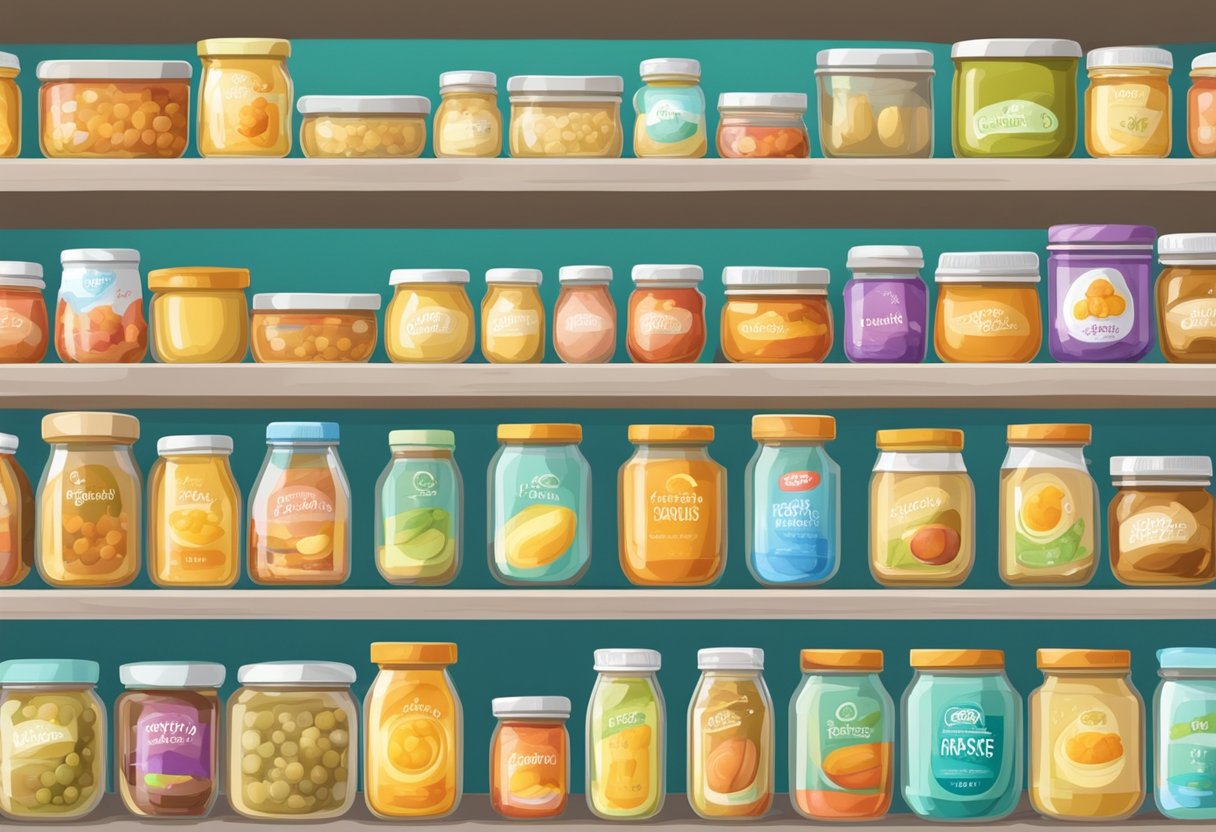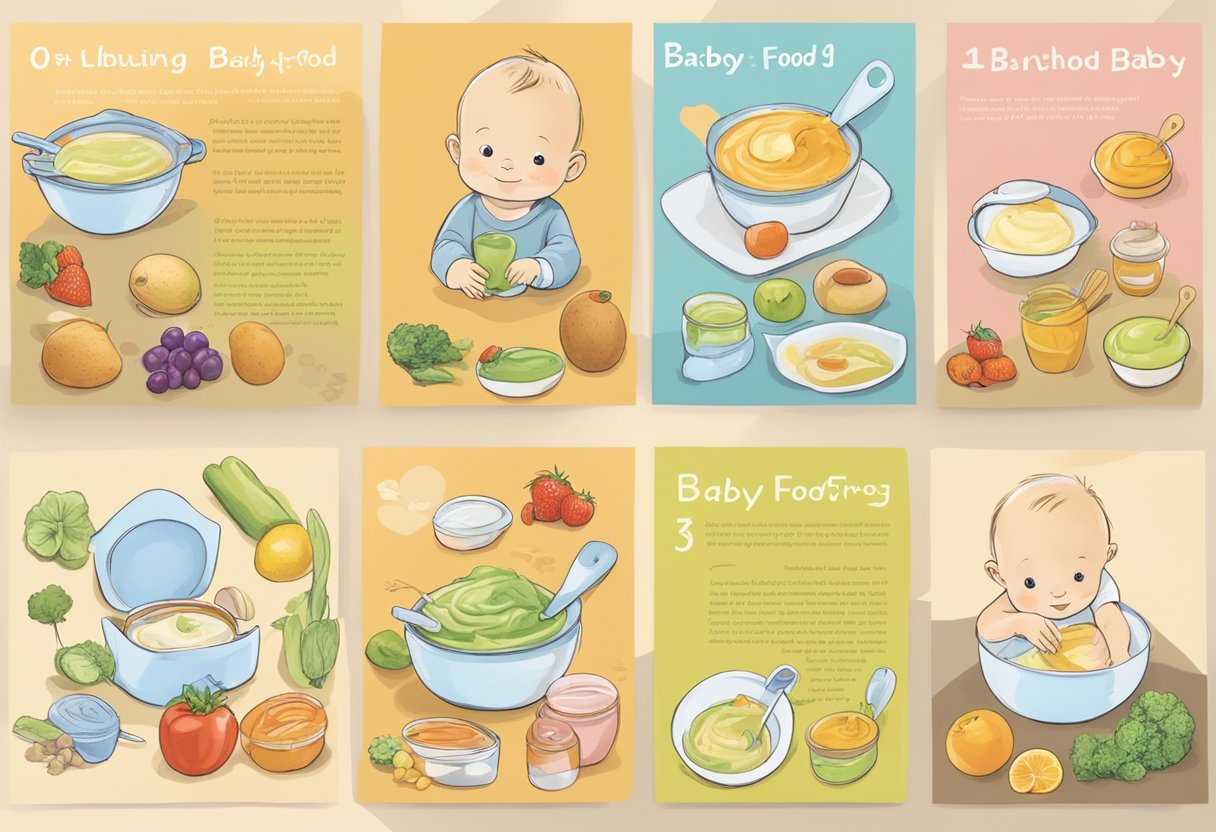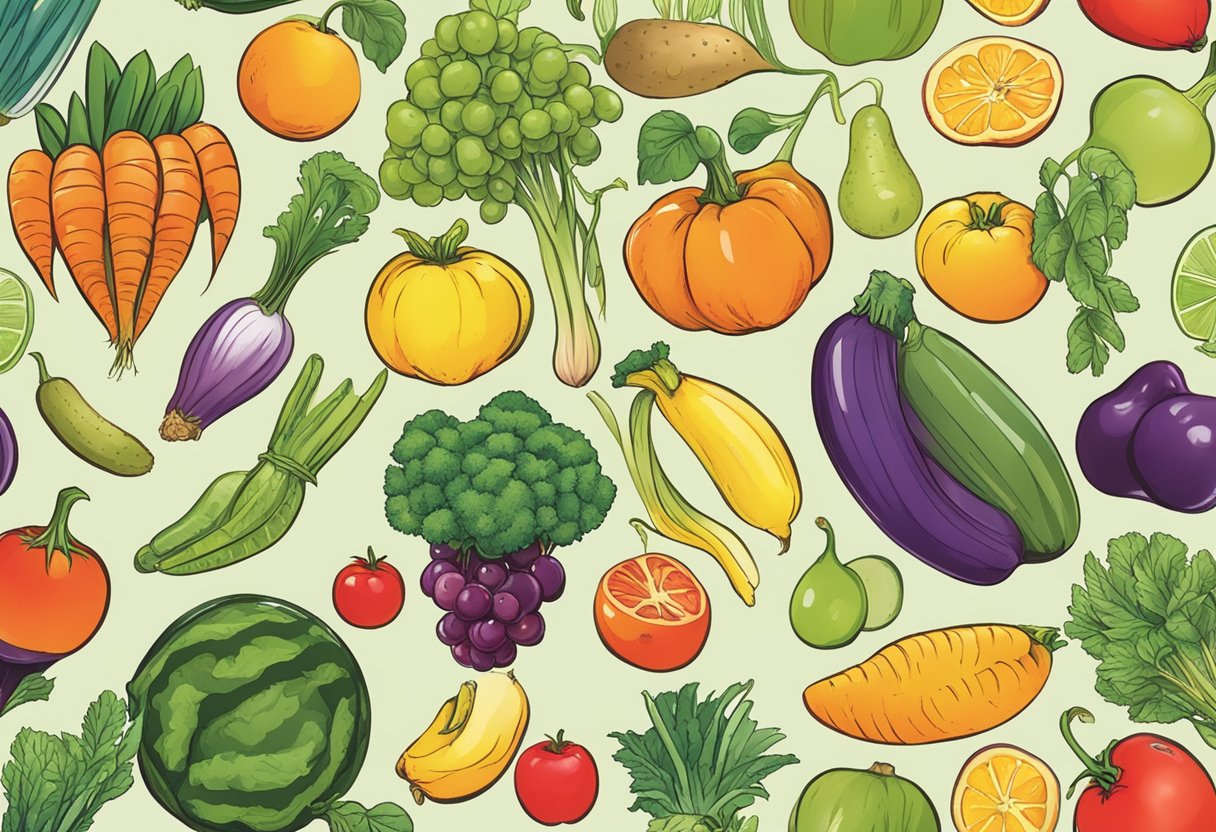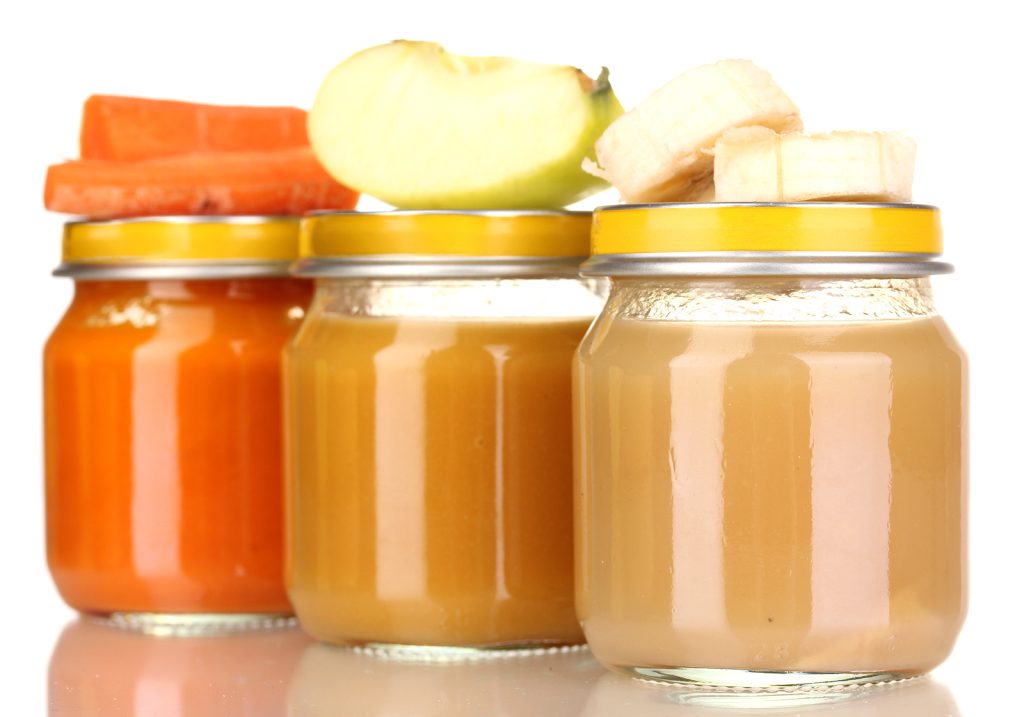Navigating the world of baby food can be overwhelming for parents, especially when trying to find the best deals without sacrificing nutrition and quality. This Baby Food Buyers Guide aims to ease that stress by providing tips on understanding baby food types and stages, as well as how to analyze ingredients to ensure your baby’s health and safety. Additionally, the guide will offer insights on convenience and storage options, such as jars and pouches, and will compare homemade and store-bought baby food to help you decide which route suits your needs and preferences.
Feeding your little ones is an important aspect of their development, which is why it is crucial to choose the right foods that will support their growth and satisfy their taste buds. By familiarizing yourself with baby food labels, exploring shopping guides, and considering pediatrician’s recommendations, you’ll be able to make informed decisions and provide the best nourishment for your baby. Furthermore, the guide will address concerns regarding baby food safety related to heavy metals and allergens, as well as answer frequently asked questions on the topic.
Key Takeaways
- Understanding baby food types, stages, and ingredients is essential for making informed decisions on nutrition and savings.
- Convenience and storage options, such as jars and pouches, exist to cater to your preferences, while also weighing the benefits of homemade versus store-bought baby food.
- Ensuring baby food safety and incorporating a pediatrician’s recommendations adds to the confidence in providing the best nourishment for your little one.
Understanding Baby Food: From Infant to Toddler
As a baby grows, their nutritional needs evolve alongside their developmental milestones. Knowing when to introduce solid foods and understanding how to find the best deals on baby food is essential for parents.
During the first 4-6 months of an infant’s life, breast milk or iron-fortified formula is the primary source of nutrition. A key milestone occurs when a baby is developmentally ready to start consuming solid foods, usually at around 6 months of age. At this stage, it is important to introduce foods rich in iron or zinc, such as fortified cereals or pureed meats2.
From 6 to 12 months, babies continue to rely on breast milk or formula, but the variety of solid foods they consume expands. Parents should offer a diverse range of fruits, vegetables, grains, legumes, and meats in various textures and thicknesses, encouraging the transition from pureed to bite-sized portions.
As the child grows into a toddler, they will become more independent eaters, exploring different tastes and textures. Maintaining a balanced diet with a focus on nutrient-rich options is crucial for their growth and development.
When shopping for baby food, consider the following tips to find the best deals:
- Compare prices: Check different stores and online retailers for the best prices on baby food items. Take advantage of sales, discounts, and coupons when available.
- Buy in bulk: Purchasing larger quantities of non-perishable baby food products can save money in the long run, as prices are often lower per unit.
- Make homemade baby food: By preparing baby food at home using fresh ingredients, you can control the quality, save on costs, and cater to your child’s specific preferences.
In conclusion, understanding an infant’s developmental stages and nutritional needs can help parents make informed choices when purchasing baby food. By considering factors such as variety, age-appropriateness, and budget, parents can ensure they are providing their children with the best possible nutrition.
Health and Nutrition Essentials
Regarding feeding your baby, health and nutrition should be at the forefront of your priorities. It is essential to ensure that you provide your baby with all the necessary nutrients for healthy growth and development. In the early stages of life, breast milk or formula should be your baby’s primary source of nutrition. Both breast milk and formula are rich in essential nutrients, such as iron, which is crucial for your baby’s brain development. Breastfeeding is often preferred as it offers additional benefits, including strengthening the baby’s immune system and promoting bonding between the mother and the child.
As your baby approaches the six-month milestone, it’s time to start thinking about introducing solid foods. This transition should be gradual and carefully planned to ensure your little one receives a well-balanced diet. Solid foods should be rich in essential nutrients, such as vitamins, minerals, and healthy fats, to maintain the health benefits your baby has received from breast milk or formula.
When introducing new foods, it is crucial to be mindful of potential food allergies. The first foods you offer your baby should be easily digestible and unlikely to cause an allergic reaction. Such foods include pureed fruits, vegetables, and infant cereals fortified with essential nutrients. As your baby becomes more accustomed to solid foods, you can slowly introduce a wider variety of ingredients, keeping an eye out for any signs of allergies.
When shopping for baby food, it’s essential to look for products that are free of added sugars, salts, and artificial preservatives. Brands like Earth’s Best and Plum Organics are known for using non-GMO, organic ingredients with no added sweeteners. Additionally, some parents make their baby’s food at home, allowing for greater control over the ingredients and extra peace of mind regarding the food’s nutritional content.
In conclusion, when choosing baby food, always prioritize health and nutrition. Ensure that your baby’s diet consists of a well-balanced combination of breast milk or formula and nutrient-rich, allergen-free solid foods. Following these guidelines can set your baby up for a healthy, thriving future.
Ingredient Analysis: From Single Ingredient to Complex Purees
When starting with baby food, paying attention to each puree’s ingredients is essential. Single-ingredient purees are made from only one fruit or vegetable, such as an apple, banana, sweet potato, pea, broccoli, or pumpkin. These are ideal for babies just beginning their solid food journey, as they allow parents to identify any potential allergies or sensitivities.
Parents can gradually introduce more complex purees containing multiple fruits or vegetables as children grow and their tastes develop. These combinations can offer a wider variety of flavors and nutrients.
When selecting packaged baby food, choosing options with organic and non-GMO verified ingredients is beneficial. These ensure that the fruits and vegetables used in the purees are free from pesticides, synthetic fertilizers, and genetically modified organisms. Choosing organic and non-GMO options is an excellent way to ensure your child’s diet is healthy and nutritious.
Aside from ingredient quality, it is also important to consider texture when choosing baby food. Purees typically progress in stages, with Stage 1 purees having a thinner consistency and being made from single-ingredient recipes. Stage 2 purees are slightly thicker and may contain more than one ingredient mixed.
When selecting fruits and vegetables for homemade purees, be aware of their natural sweetness and balance your baby’s meals accordingly. For example, apples and bananas are sweeter, while peas, broccoli, and sweet potatoes offer more savory flavors.
In conclusion, selecting baby food based on ingredient analysis and considering factors such as single or multi-ingredient purees, organic and non-GMO verified ingredients, and appropriate textures will help you find the best deals and ensure a nutritious diet for your child’s growing needs.
Decoding Baby Food Labels: Brands and Ingredients
When choosing baby food, paying close attention to labels is essential to ensure you’re providing your little one with the best nutrition possible. There are numerous baby food brands available, each with its unique approach to ingredients and production methods.
Popular brands such as Gerber and Little Spoon offer various baby food options, ranging from purees to finger foods. Other notable brands include Once Upon a Farm, Cerebelly, and Serenity Kids. It’s crucial to compare these brands in terms of their ingredient quality and overall nutritional value when deciding what’s best for your baby.
When examining baby food labels, focus on ingredients, additives, and preservatives. Look for products with simple, easily recognizable elements such as fruits, vegetables, and lean proteins. Additionally, be wary of any artificial additives or preservatives that may harm your baby’s health.
One way to ensure higher-quality ingredients is to look for the USDA Organic seal. This certification indicates that the baby food is made with at least 95% organic ingredients, free from GMOs, synthetic fertilizers, and harmful pesticides. Products labeled as “Made with Organic Ingredients” contain a minimum of 70% organic ingredients, though they do not have the USDA Organic seal.
Here’s a brief overview of some critical factors to keep in mind while decoding baby food labels:
- Brands: Compare baby food brands such as Gerber, Little Spoon, Once Upon a Farm, Cerebelly, and Serenity Kids to find the best fit for your baby’s needs.
- Ingredients: Look for simple, recognizable ingredients like fruits, vegetables, and protein sources.
- Additives and Preservatives: Avoid artificial additives and preservatives that may harm your baby’s health.
- GMOs: Opt for products free from genetically modified ingredients when possible.
- USDA Organic: Look for the USDA Organic seal to ensure higher ingredient quality and environmentally friendly production methods.
By keeping these factors in mind and thoroughly examining baby food labels, you can confidently choose the best products for your child’s growth and development. Remember to always consult with your pediatrician when introducing new foods to ensure your baby is receiving the appropriate nutrition for their age and development stage.
Convenience and Storage: Jars, Pouches, and More
When it comes to baby food storage options, there is a wide variety to choose from. Understanding the differences between jars, pouches, and other types of containers will help make feeding your baby a more convenient and enjoyable experience.
Traditional glass jars have been popular for decades due to their durability and ease of use. They are reusable, microwave-safe, and freezer-safe, making them a versatile option for storing baby food. Glass jars also tend to be BPA-free, an essential consideration for many parents, as BPA exposure is associated with potential health risks. An example of a budget-friendly choice that uses glass jars is Gerber Organic 1st Foods.
On the other end of the spectrum, baby food pouches have gained popularity because of their convenience and portability. These pouches are perfect for on-the-go feedings, as they can easily be packed in a diaper bag or hung from a stroller. Some popular choices for organic baby food pouches are Plum Organics Stage 1. Keep in mind that it is essential to choose BPA-free pouches to avoid potential health risks.
In addition to jars and pouches, specialized baby food storage containers are available, designed specifically for preparing and storing homemade baby food. One example is the WEESPROUT Silicone Baby Food Freezer Tray, which features ten sections, a food-grade silicone construction, and a convenient plastic lid for stacking.
Parents should consider the following factors when determining the best storage option for their baby’s food:
- Convenience: Pouches are ideal for on-the-go parents, while jars may be more suitable for home use.
- BPA-free: Ensure your chosen containers are free from harmful chemicals like BPA.
- Compatibility: Some storage options may better suit homemade baby food, while others are designed for store-bought varieties.
In conclusion, choosing the best baby food storage option depends on various factors, including convenience, safety, and individual lifestyle. By considering these factors and familiarizing yourself with the available options, you can make an informed decision that best meets your needs and supports your baby’s growth and development.
Homemade vs Store-Bought Baby Food
When deciding between homemade and store-bought baby food, it’s essential to consider factors such as nutritional value, convenience, and cost. Both options have advantages and disadvantages, and the final choice depends on your preferences and lifestyle.
Homemade baby food gives parents complete control over the ingredients used, ensuring their little ones consume the highest quality of nutrients. A knowledgeable cookbook author can provide diverse recipes to create delicious and nutritious meals tailored to a baby’s developmental needs and tastes. On the other hand, preparing baby food at home can be time-consuming and requires careful attention to safe food handling practices.
In contrast, store-bought baby food offers convenience, especially for busy parents. The easy-to-carry prepackaged meals are perfect for eating on the go, and they typically have a longer shelf-life than homemade options. However, some commercial baby foods may contain added sugars, preservatives, or limited variety in flavors and textures, which could be of concern to some parents.
Cost-effectiveness is another factor to consider. While store-bought baby food may seem more expensive at first glance, it’s essential to factor in the expenses of purchasing ingredients, cooking, and storing homemade baby food. For some families, the difference in cost might not be significant enough to sway their decision.
Parents should also be aware of the potential for spoilage in homemade baby food. Store-bought varieties can sit unopened for more than a year, while homemade options may last only a couple of days in the refrigerator, although they can last longer in the freezer if stored properly.
In summary, the decision between homemade and store-bought baby food depends on a variety of factors. While homemade options offer customization, control over ingredients, and potentially higher nutritional quality, store-bought baby food provides convenience, longer shelf-life, and ease of transport. Ultimately, parents should find the option that best suits their unique needs and preferences.
Feeding Development: Textures, Taste, and Transition Foods
When introducing solid foods to babies, it is essential to consider the development of their feeding skills, including textures, taste, and use of transition foods. Babies typically begin with pureed foods with a smooth, watery consistency, allowing them to learn how to swallow and digest food more efficiently. Some popular choices for this stage include bananas and peas, which can be easily mashed and have a mild taste.
As babies progress in their feeding journey, new textures and tastes can be gradually introduced, helping them become more comfortable with different foods. Puffs are a popular transition food, as they are easy to grasp with the developing “pincer grasp” skill at around 6-8 months of age and dissolve quickly in the mouth. Toddler-friendly finger foods like cooked vegetables, soft fruits, and pasta cut into small pieces should eventually be added when babies are ready, as they can safely practice self-feeding.
Taste preferences begin to develop early in life. As such, it is essential to introduce a variety of tastes to help prevent picky eating later on. Offer single-ingredient foods at first and space them out by three to five days, giving the baby a chance to get used to the new taste and texture. If there is any adverse reaction such as a rash or vomiting, it will be easier to identify the food causing the problem.
Baby-led weaning is an approach that allows babies to self-feed from the start, encouraging them to explore different textures and tastes while still learning to chew and swallow. Baby-led weaning can be considered when a baby is ready to sit independently and shows interest in table foods.
In summary, it is essential to gradually introduce various textures, tastes, and transition foods to help babies develop their feeding skills and adapt to new food experiences. By doing so, parents can help their children establish healthy eating habits and preferences from the start, catering to their changing needs as they reach toddlerhood.
Shopping Guides: Best Deals and Savings
Finding the best deals and savings on baby food is essential for budget-conscious parents. There are numerous ways to save while ensuring the nutritional needs of your little one are met. Here are some tips for finding the best deals on baby food.
Due to their large customer base and market dominance, shopping at major retailers like Amazon and Target can offer significant discounts. Keep an eye out for offers and deals by closely watching their online sales or subscribing to their newsletters. Additionally, stores like Walmart and Wayfair are known for providing noteworthy discounts on baby food and related products.
When shopping for baby food, comparing prices and looking for sales and discounts is essential. Websites like What to Expect offer comprehensive lists of the best baby deals, simplifying the comparison process.
Don’t overlook the benefits of rewards programs popular baby food brands offer. Many programs like Enfamil Rewards allow you to earn points for purchases, which can be redeemed for free product samples or coupons. This helps reduce the overall cost of baby food.
Another great way to save on baby food is to explore the WIC (Women, Infants, and Children) program benefits. If eligible for WIC, you can receive vouchers for nutritious baby foods at no cost. Check with your local WIC office for eligibility and program details.
Lastly, consider utilizing subscription services for baby food delivery. Subscribing to a benefit saves you time and can result in lower prices due to bulk purchases or discounted rates. Many subscription services also offer the flexibility to tailor your baby’s meals to their needs. You will find the best baby food deals and savings by researching and taking advantage of these various resources.
Baby Food Safety: Heavy Metals and Allergens Concern
Regarding baby food safety, some of the primary concerns include heavy metals and allergens in the products. Both can have potentially harmful effects on a child’s health if consumed in large amounts. As a parent or caregiver, you must be aware of these issues and take necessary precautions while selecting baby food for your little ones.
According to Consumer Reports, heavy metals such as lead, arsenic, and cadmium are commonly found in varying levels within baby food products. While the amounts of these metals appear to have decreased in recent years, the overall risk still hasn’t changed significantly. The FDA is actively working on improving regulations and monitoring commercial baby food products to further reduce these toxic metals’ presence.
One way to minimize the risk of heavy metal exposure is by preparing homemade baby food using fresh ingredients. However, suppose you still choose to buy commercial baby food. In that case, it is recommended to check the brand’s reputation and avoid options notorious for containing high levels of heavy metals. Some healthier alternatives include soft table foods for babies ready for solid foods.
Allergens are another primary concern for parents while purchasing baby food. The most common food allergens include milk, eggs, peanuts, tree nuts, soy, wheat, fish, and shellfish. According to the American Academy of Pediatrics (AAP), it is essential to introduce allergenic foods early and often when a baby is between 4-6 months old. This can help to reduce the risk of allergy development in the future.
To ensure your baby’s nutritional needs are met while avoiding potential allergens, consider the following tips:
- Read labels carefully to be aware of the ingredients used in the baby food products.
- Rotate between multiple brands and products as long as they are reputable and known for their safety standards.
- Monitor your baby’s reactions after giving them a new food item, and consult a pediatrician if any allergic reactions are suspected.
By staying informed and remaining vigilant about the safety standards and allergens in baby food products, you can make the best decisions for your child’s health and well-being.
Pediatrician’s Recommendations and Final Thoughts
Pediatricians play a crucial role in guiding parents and caregivers through selecting the best baby food options. When it comes to ensuring a child’s optimal brain development and growth, following the recommendations of the American Academy of Pediatrics, is a wise choice for families.
Firstly, pediatricians emphasize the importance of age-appropriate nutrition. They suggest that babies start solid foods around six months old and gradually introduce various food groups as they age. Parents must consider their child’s specific needs and preferences while choosing baby food products, considering that each child’s developmental stage may differ slightly.
Another vital aspect is paying attention to the ingredients and nutritional value of the baby food. A well-balanced diet, rich in essential vitamins, minerals, and macronutrients, is pivotal to a child’s wellbeing. Pediatricians can provide valuable insights on choosing products that do not contain harmful additives or preservatives, which may negatively impact a child’s overall health.
In addition to the pediatrician’s recommendations, parents and caregivers must stay up-to-date with the latest research on infant and toddler nutrition. Knowledge about food allergies, appropriate portion sizes, and potential choking hazards can ensure a safe and enjoyable feeding experience.
Lastly, it is vital to remember that a baby food buyer’s guide should not be a one-size-fits-all solution. Parents should stay flexible and open-minded, as their child’s preferences and needs may change over time. In this journey, a pediatrician’s advice can play an instrumental role in making informed choices and finding the best deals on baby food tailored to the child’s specific needs.
Frequently Asked Questions
What factors should I consider when choosing baby food?
When choosing baby food, consider nutritional value, ingredients, and stage appropriateness. Look for baby food labeled “USDA organic” to ensure at least 95% organic ingredients, and aim for various flavors and grain sources for better nutrition. As a parent, you may also want to choose products with eco-friendly packaging and avoid added sugars.
Is homemade baby food more cost-effective than store-bought?
Homemade baby food can be more cost-effective than store-bought, depending on the ingredients and time you invest in making it. Homemade baby food allows for more control over elements, variety, and portion size, potentially saving potential costs. However, store-bought baby food offers convenience and consistency for busy parents.
What are the pros and cons of organic baby food?
Organic baby food offers benefits such as lower exposure to pesticide residues and GMOs while being held to higher production standards. However, organic baby food may be more expensive than non-organic options. Non-GMO organic ingredients are often perceived as healthier, but the nutrition differences may not be significant enough to justify the additional cost for all families.
How can I ensure good nutrition while keeping costs low?
To ensure good nutrition while keeping costs low, look for baby food products made from diverse grains and flavors, focusing on whole-food ingredients. You can also consider bulk purchasing or making homemade baby food to save money. Keep an eye out for sales and discounts to help lower costs, and introduce a variety of fruits and vegetables to your baby as they grow.
Where can I find the best discounts on baby food products?
Finding the best discounts on baby food products can involve research and comparison shopping. Consider using coupons, signing up for store loyalty programs, and using rebates through cash-back apps. You might also find discounts through online retailers or purchasing in bulk, online or at warehouse stores.
Which baby food brands offer the highest quality at reasonable prices?
Some baby food brands offering reasonably priced high-quality products include Beech-Nut, Gerber, Earth’s Best Organics, Mama Bear, Happy Baby, Sprout Organics, and Peter Rabbit Organics. These brands provide a mix of organic and non-organic options focusing on nutrition and taste, suitable for a range of budgets.









